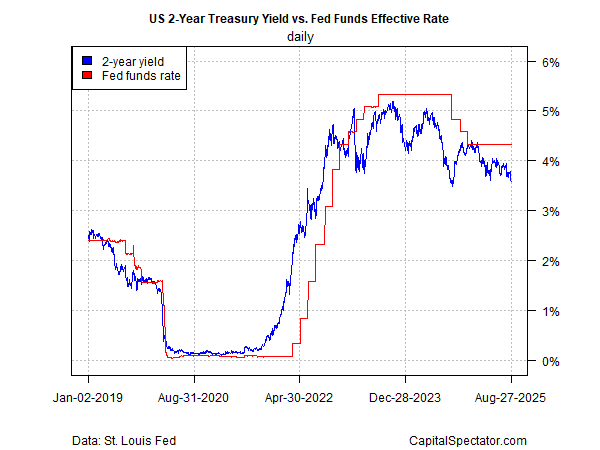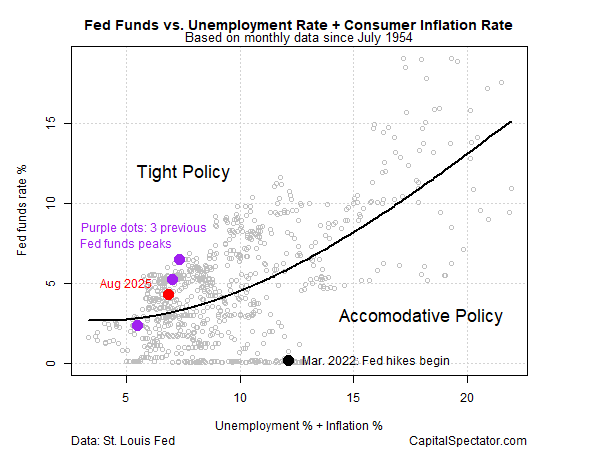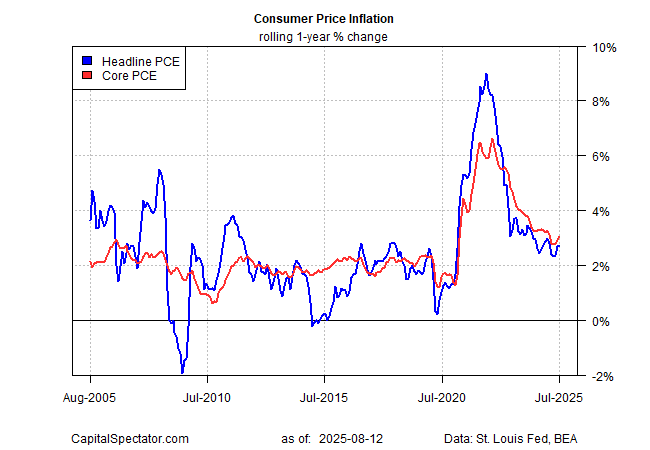Is it because of President Trump’s pressure campaign on the central bank to ?
Or perhaps it’s all about concerns that economic growth is slowing and receding expectations that tariff will raise . Maybe it’s a combination of all of the above.
Whatever the reasoning, markets are confident that the Federal Reserve will trim its target rate at the Sep. 17 policy meeting.
Consider the policy-sensitive , which fell sharply on Wednesday (Aug. 27), dropping to the 3.62% — the lowest since May. More importantly, the yield is approaching a full percentage point below the median 4.33% Fed funds target rate – the lowest since last October. The gap is a clear sign that sentiment is all in on expecting a rate cut.

A simple model that relates unemployment and consumer to the Fed funds rate suggests that there’s a solid case for easing policy, which remains moderately tight based on the measure.
The challenge for the Fed is that the possibility of higher inflation due to tariffs can’t be dismissed, at least not yet. But as Fed Chairman Powell noted last week, slowing economic growth appears to be the bigger threat, he advised: “The shifting balance of risks may warrant adjusting our policy stance… The stability of the and other labor market measures allows us to proceed carefully as we consider changes to our policy stance,”
Fed funds futures are pricing in an 87% probability for a rate cut at the Sep. 17 FOMC meeting.
The risk is that inflation may be starting to accelerate. A possible sign is the pickup in the core measure of the , which rose 3.1% in July vs. the year-ago level – the fastest pace since February. If this is a sign of firmer pricing pressure in the months ahead, easing rates will be ill-timed and could lay the groundwork for a significant policy error.

Yet there are also signs that economic growth is downshifting. The Atlanta Fed’s third-quarter nowcast is currently estimating a 2.2% increase, down from Q2’s 3.0% rise.
The dilemma for the Fed is that its policy tools can’t simultaneously address slowing growth and rising inflation – so-called stagflation. The hope is that one or the other risk turns out to be a false signal, or at least a lesser threat.
Hope is hardly an ideal strategy for effective central bank policy, but at the moment it’s the only game in town.
